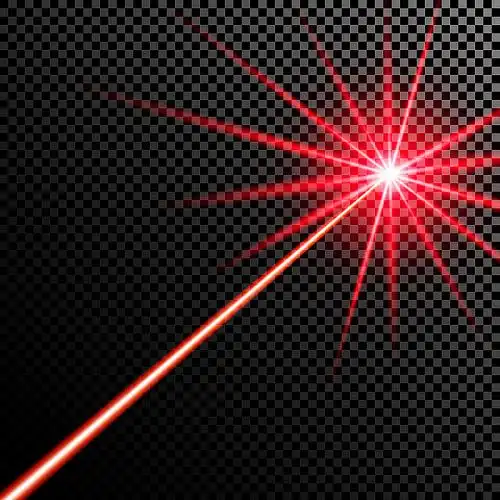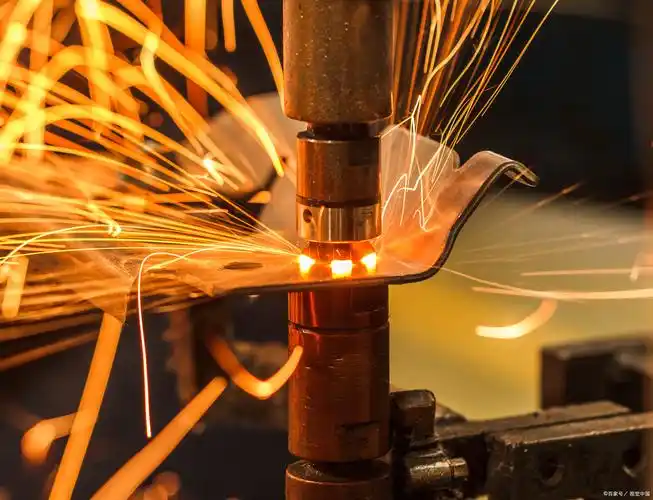Laser technology has revolutionized modern manufacturing. Among its many applications, Laser Beam Welding (LBW) stands out as a high-precision, high-efficiency, and flexible welding method. Unlike traditional welding methods, LBW uses a concentrated laser beam as a heat source, causing the material to melt and fuse within a minimal heat-affected zone, resulting in high-quality welds on precise or complex components.
But why can a laser beam carry such high energy? How did this technology evolve from a scientific theory into an indispensable industrial tool? This article explores the history and physical principles of lasers, as well as their practical applications in laser beam welding.

Laser Beam
The Origins of Laser Technology
Early Theoretical Foundations
The foundation of laser technology—stimulated emission—was first proposed by Albert Einstein in 1917. He suggested that a single photon could stimulate an excited atom to emit a second photon with the same energy and phase, laying the theoretical groundwork for the amplification of coherent light.
From Microwave Amplifiers to Lasers
In 1953, American physicist Charles Townes invented the microwave amplification by stimulated emission of radiation (Maser), applying the principle of amplification using microwaves instead of visible light. In 1957, his doctoral student Gordon Gould coined the term “laser” (Light Amplification by Stimulated Emission of Radiation), theoretically describing how light could excite atoms to produce a coherent beam. Gould subsequently applied for a patent, leading to nearly thirty years of legal disputes.
The First Practical Laser
In 1960, Theodore Maiman at Hughes Laboratory in California created the first ruby laser, producing an operational laser beam. The following year, lasers were used in medical surgery for the first time, successfully treating retinal tumors, demonstrating both the precision and high energy of laser technology.

Laser Beam Welding
Milestones in Laser Development
1962: The invention of the semiconductor diode laser, laying the foundation for today’s compact commercial lasers.
1969: Lasers were used in remote sensing; a laser beam reflected from the Apollo 11 lunar retroreflector allowed precise measurement of the Earth–Moon distance.
1971: Lasers entered the arts, used in stage lighting effects and holography. British physicist Dennis Gabor received the Nobel Prize for his work in holography.
1974–1978: Lasers enabled barcode scanners, laser printers, and CD players, transforming data processing and consumer electronics.
1983: President Reagan proposed the space-based laser weapons program (“Star Wars”).
1988: The first transatlantic fiber optic link was established, transmitting data via laser pulses.
1990s–2000s: Lasers were widely applied in manufacturing, including integrated circuits, automotive production, and medical surgery.
2010–2014: Lasers were used in nuclear fusion experiments, optical tractor beams, and ultra-high-speed data transmission, demonstrating innovative scientific and industrial applications.
These milestones show how laser technology evolved from theoretical physics into a practical tool capable of delivering highly concentrated energy for industry, medicine, and research.
What is Laser Beam Welding (LBW)
Laser Beam Welding is a process that uses a high-energy-density laser beam as a heat source to rapidly melt material and form a weld. Compared with conventional arc or gas welding, LBW offers several key advantages:
Higher energy density: The laser beam concentrates energy on a small area, achieving deep penetration and precise melting.
Higher precision: LBW can weld small components with minimal thermal deformation.
Minimal heat-affected zone: Reduces residual stress and distortion.
Automation-friendly: Well-suited for integration with robotic systems for large-scale production.
The ability of lasers to deliver high energy directly to the workpiece is critical for the efficiency and quality of LBW.
Why a Laser Beam Carries Energy
A laser is essentially a stream of photons, each carrying energy E=hνE = h\nuE=hν. When the laser beam is highly concentrated, the energy density per unit area becomes extremely high, producing temperatures of several thousand to tens of thousands of degrees Celsius at the focal point.
During welding, these photons are absorbed by the material, rapidly raising the local temperature to the melting point. A molten pool forms, creating a weld in a very small area and achieving high-quality, precise results.
Typical Processes in Laser Beam Welding
Conduction Mode Welding
Mechanism: Low-power lasers heat only the surface of the material, with energy conducted into the surrounding region.
Features: Shallow welds, smooth surface, minimal heat-affected zone.
Applications: Electronic components, precision small parts, thin metals.
Keyhole Mode Welding
Mechanism: High-power lasers rapidly vaporize material, forming a “keyhole” through which energy penetrates deeply, enabling deep fusion.
Features: Deep, narrow welds with high efficiency.
Applications: Automotive manufacturing, aerospace, thick-plate structural components.
From Einstein’s stimulated emission theory in 1917 to widespread industrial adoption today, laser technology has fundamentally transformed welding processes. Today, Laser Beam Welding is widely used in automotive, aerospace, electronics, medical devices, and precision engineering.
At ZS Laser, with over a decade of experience in laser equipment, we have helped numerous domestic and international companies upgrade their welding capabilities. If you need high-quality laser welding equipment, feel free to contact us. We offer free sample welding tests, CE-certified machines, and are your trusted partner for laser technology solutions.
 ZS Laser Equipment
ZS Laser Equipment


WhatsApp
Scan the QR Code to start a WhatsApp chat with us.